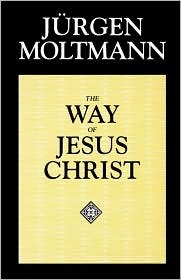![]()
"Salvation ... includes the health of the body. Jesus makes 'the whole human being' well (John 7.23)"

"Salvation, then, is the summing-up of all the healings. Since it is part of the lordship of God, it is as all-embracing as God himself and cannot be restricted to part-sectors of creation. It is not `the salvation of the soul', although of course the sick person's soul also has to be healed. Nor can we exclude any particular earthly sphere from salvation, giving it the name of 'well-being' or 'welfare' and subtracting it from the influence of Jesus' lordship. 'Salvation is an entity which includes the wholeness and well-being of human beings. Salvation is for the totus homo; it is not merely salvation of soul for the individual.' Salvation does not mean merely 'spiritual benefits'. It includes the health of the body. Jesus makes 'the whole human being' well (John 7.23).”
“Salvation does not mean merely 'spiritual benefits'. It includes the health of the body. Jesus makes 'the whole human being' well (John 7.23).”
"Salvation, then, is the summing-up of all the healings. Since it is part of the lordship of God, it is as all-embracing as God himself and cannot be restricted to part-sectors of creation. It is not `the salvation of the soul', although of course the sick person's soul also has to be healed. Nor can we exclude any particular earthly sphere from salvation, giving it the name of 'well-being' or 'welfare' and subtracting it from the influence of Jesus' lordship. 'Salvation is an entity which includes the wholeness and well-being of human beings. Salvation is for the totus homo; it is not merely salvation of soul for the individual.' Salvation does not mean merely 'spiritual benefits'. It includes the health of the body. Jesus makes 'the whole human being' well (John 7.23).
It is no less wrong to push salvation off into a world beyond this one, and to limit its effects to an invisible life of pure faith, outside empirical experience. Nor should we make the healings external signs of the inner process of the forgiveness of sins. The healing of the sick and the forgiveness of sins are necessary, and the one cannot be reduced to the other. At the same time, however much we stress the holistic nature of salvation, which is grounded in the power of God, there is a difference between salvation and healing which cannot be overlooked: Healing vanquishes illness and creates health. Yet it does not vanquish the power of death. But salvation in its full and completed form is the annihilation of the power of death and the raising of men and women to eternal life. Even the dead whom Jesus healed and raised - Lazarus, for example - were still subject to the power of death, and later died again. It is therefore correct when Paul (I Thess. 5.8; Rom. 8.24) sets salvation 'in the mode of hope' (as W. Schrage puts it). He does not assign salvation generally to a future for which we can only hope; we may put it more precisely, and say that he sets it in the mode of hope for the resurrection; for only this is the hope for the annihilation of death itself (I Cor. 15.28) and the liberation of the whole creation from that power of annihilation. Healings and salvation are related to one another in such a way that the healings are signs, this side of death, of God's power of resurrection or, as John says, signs of Christ's 'glory'; while salvation is the fulfilment of these prefigured real promises in the raising of the dead to eternal life. Just as healing overcomes sickness, so salvation overcomes death. Because every sickness is a threat to life, and is therefore a foreshadowing of death, every healing is a living foretoken of the resurrection. The therapeutic significance of redemption lies in the healing of men and women in their essential being that is, in the becoming whole of what has been separated by death, and in the universal elimination of the germ of decay and mortality.
Salvation in this sense has two sides to it, one personal and one cosmic. Paul calls the personal side of salvation `the resurrection of the dead'. He calls the cosmic side `the annihilation of death'. It is only if we see the two sides together that we understand that salvation also means `the transfiguration of the body' (Phil. 3.21) and `the new earth' (Rev. 21.4).”
Jurgen Moltmann. The Way of Jesus Christ (Kindle Locations 1676-1696). Kindle Edition.
Disclaimer: Our material may be copied, printed and distributed by referring to this site. This site also contains copyrighted material the use of which has not always been specifically authorized by the copyright owner. We are making such material available to our readers under the education and research provisions of "fair use" in an effort to advance freedom of inquiry for a better understanding of religious, spiritual and inter-faith issues. The material on this site is distributed without profit. If you wish to use copyrighted material for purposes other than "fair use" you must request permission from the copyright owner.